This is a popular question. I've been in some preliminary talks with a potential new client for a design and supervisory role on a new home studio build in my area.
The obvious question is how much, the reply, well. . It depends. So many variables exist in studio construction it's very different than any other type of construction in a home.
So as a preliminary starting talking point I have him a basic structural materials cost estimate. This was based on the alloted area 22'x24' with two rectanglular rooms, divided by a double wall assembly. Very crude, but a starting point, and a weigh to address some basic cost vs benefit stuff. Since rooms of these sizes are so common in the home studio boom I thought it might be useful.
It also be great to hear from the others who have built, or had studios built for them, to get a scope of studio costs in general. I'll attach the cover sheet full size and the breakdown in the attachments. I'll also include one preliminary layout, which is non rectangular, and based closely of the picture on the cover of Build It Like The Pros.
Tags
Comments
isolation is one thing, building a room sans problematic modes i
isolation is one thing, building a room sans problematic modes is another. read up on golden ratios (not necessary but a good starting point) and room modes.
i won't comment further. you have Brian here to help and it's more in his field of expertise than mine. i am reticent to say any more as i might provide erroneous info.
What I mean is, that room seems to be obviously almost square li
What I mean is, that room seems to be obviously almost square like mine, but not worrying about the ratio so much, a design like this would help deal with early reflections and flutter echo and so forth, would it not? And it would also make it less square, as it were? As a planning starting point, maybe?
Man. I don't really know what to do with that. I mean, we sorta
Man. I don't really know what to do with that. I mean, we sorta just established that one of my main wants is not totally doable. I do want isolation--I want the room (if possible) to minimize the higher frequency issues like flutter echo, etc. by, for instance, having walls out of parallel... but, I mean...apart from trying to follow Rod's advice for building walls and a ceiling that will provide the isolation I need, the HVAC concerns, I'm not sure what else you might mean? I mean... I know I would like to maintain as much space as possible since it will be used for both recording AND mixing...but honestly, this whole thing is still extremely unfamiliar to me.
I am purely, simply, a musician who is trying to build a space that will allow me the chance to really develop and learn the art of recording and mixing my music. I am competent musically only and this entire world of audio production is absolutely foreign to me. I am a willing learner, but this stuff does not come easy to me. Learning a very minimal amount about acoustics and how it relates to mixing is extremely challenging for me and is really a means to an end. But what I have learned is that my room is of supreme importance. I want the best room I can get because I'm a perfectionist musically and I'm willing to do what I have to to achieve the end I want.
It is supposed to be slow going. When a new house is built does
It is supposed to be slow going. When a new house is built does the builder not have his tradespeople in place, materials are scheduled, blueprints, fees and everything involved are taken care of as needed.
The electrician doesn't show after the drywall team to do his job....he shows up before because that is where he will be the most productive.
So not only do we have something to learn from the house builder...as you are finding out...new things need to be learned.
Mass is required to attempt to stop sound
Decoupling is required to break the path vibration moves along. Easy things to say but can be hard to impliment when you consider every aspect of the build potentially becomes a path.
peteresat, post: 446655, member: 50090 wrote: Brien, what do you
peteresat, post: 446655, member: 50090 wrote: Brien, what do you think about building something along these lines in my space? (Borrowed it from John Sayers website):
imo, your best way to go forward would be to take that as a guide but to forgo the splayed walls. in other words do the treatments shown but don't go into a load of construction other than finishing the room as a den or playroom and dealing with sound transmission. any benefits you would glean from the splaying of the walls is lost on the low ceiling.
Depending on what this room actually looks like the o.p. may sti
Depending on what this room actually looks like the o.p. may still be able to get an 8 foot or better ceiling height...and that is better than many a typical basement that I have seen thru the years.
But at the end of the day...the isolation requirements will dictate what needs to be done.
Aren't the splayed walls primarily to deal with flutter echo and
Aren't the splayed walls primarily to deal with flutter echo and the like?
p. 29 in Rod's book: "To minimize flutter echoes...certain precautions can be taken. If you're building from scratch, facing walls can be constructed out of parallel by at least 1 in 10 (6%)."
From what I understand, flutter echoes can be an issue in any room, right? I know I can treat it acoustically because I have before, but why not build that in if I can from the get-go?
I am just a knucklehead in a long line of knuckleheads around he
I am just a knucklehead in a long line of knuckleheads around here...but it would be a personal favor to me....if you would address your concerns in the other thread you started...or start one specific to your concerns...outside of that...I ain't saying another word...
Brien, I suspect you're right because the 8'10" measurement is t
Brien, I suspect you're right because the 8'10" measurement is to the bottom of floor joysts above. Here's a couple of pics. And by the way, I said the original measurements are H 8'10" x L 17'10" x W 17' 4", but that's not entirely accurate. I did not include that rectangular section behind the drum kit because there is a sump pump in the far left corner that has to be closed off and I figured we'll just wind up enclosing that entire section. If not, it extends to about 20'6" if you include that little area.
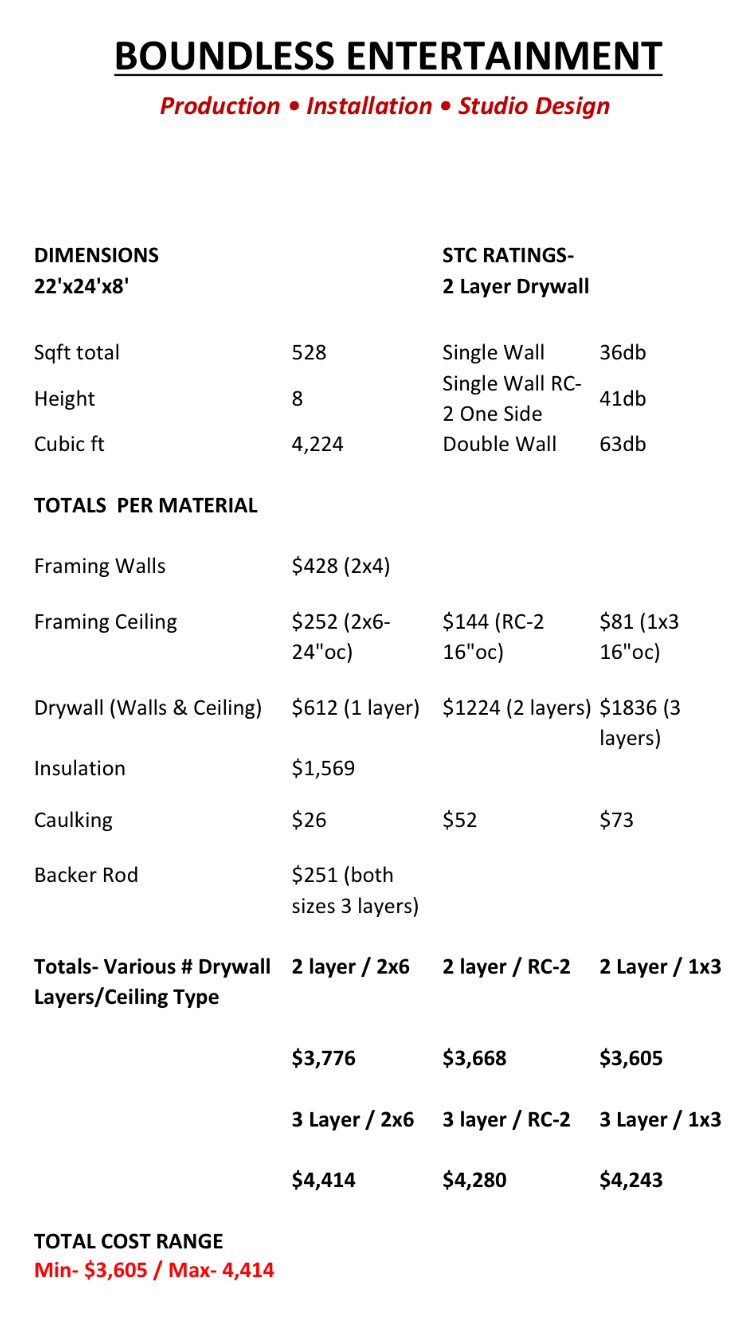
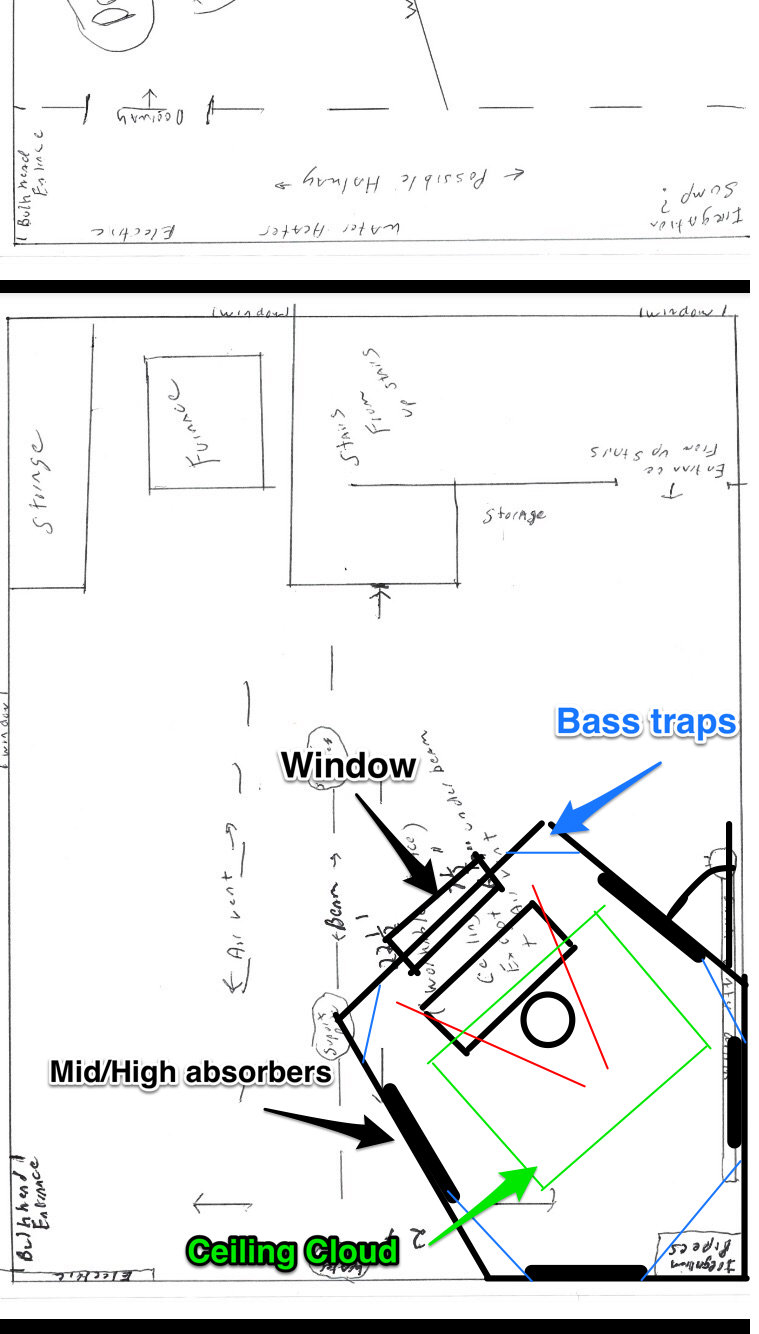
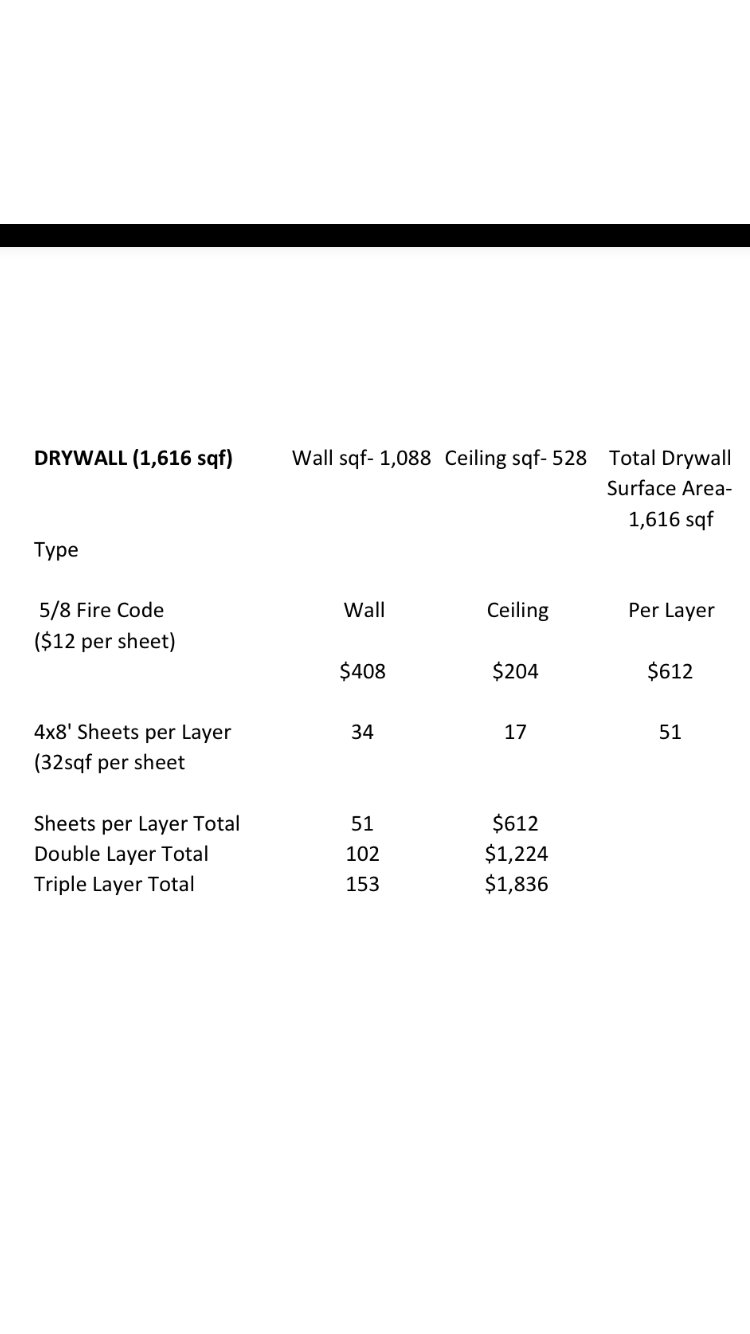
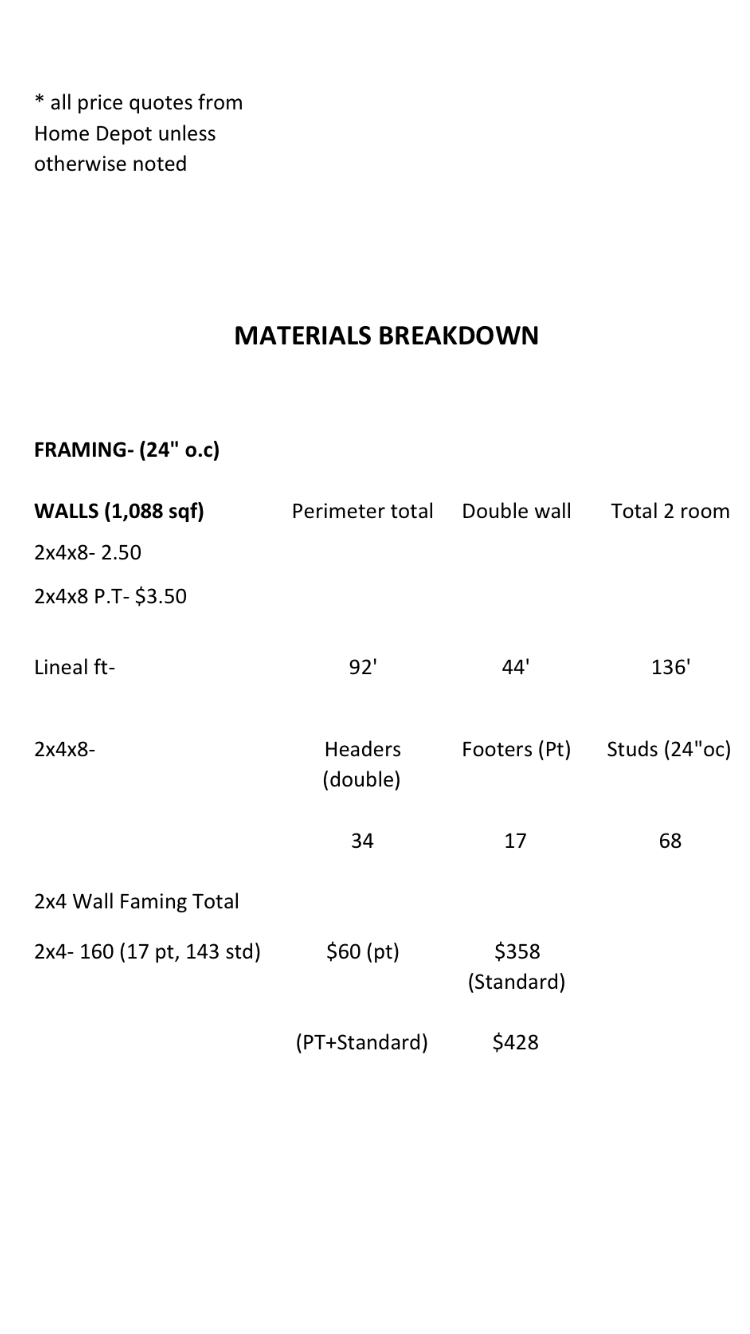
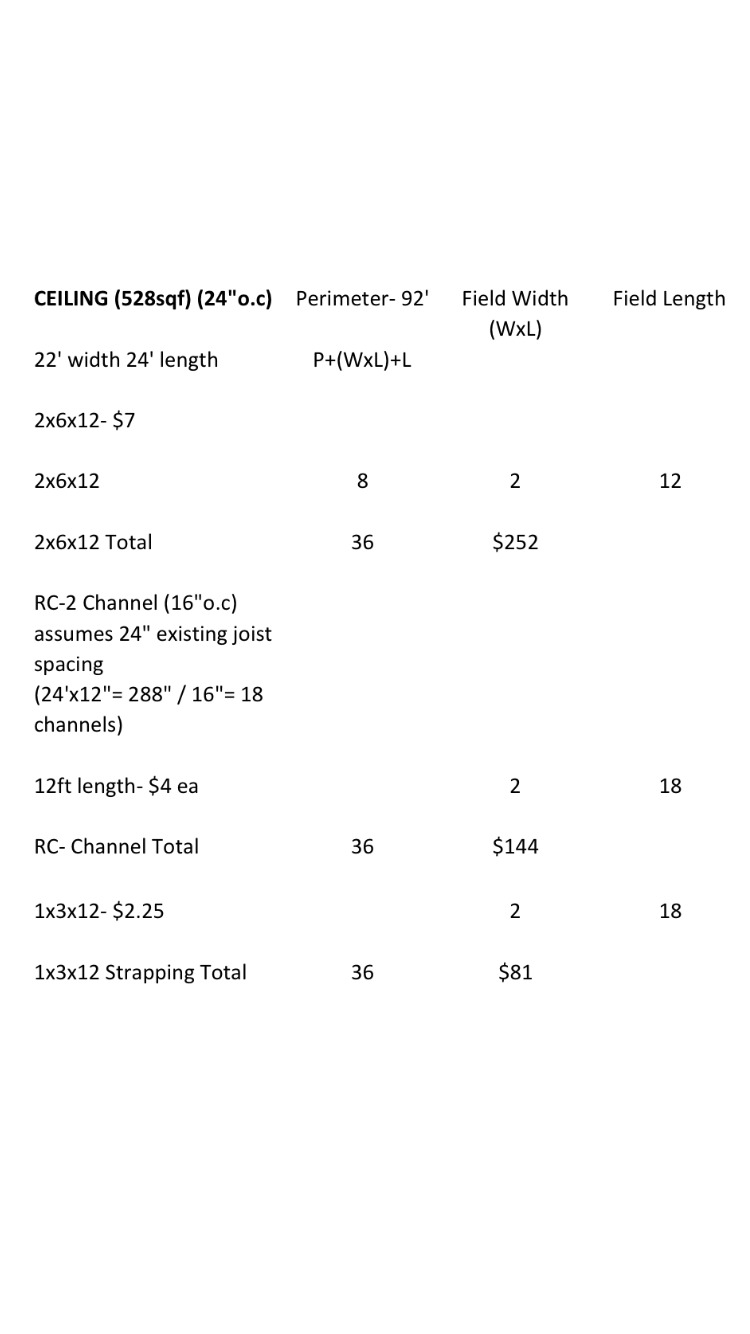




Yes. If my isolation requirements were such that I needed sepera
Yes. If my isolation requirements were such that I needed seperation from the outside world...I would do it...carefully and detailed.